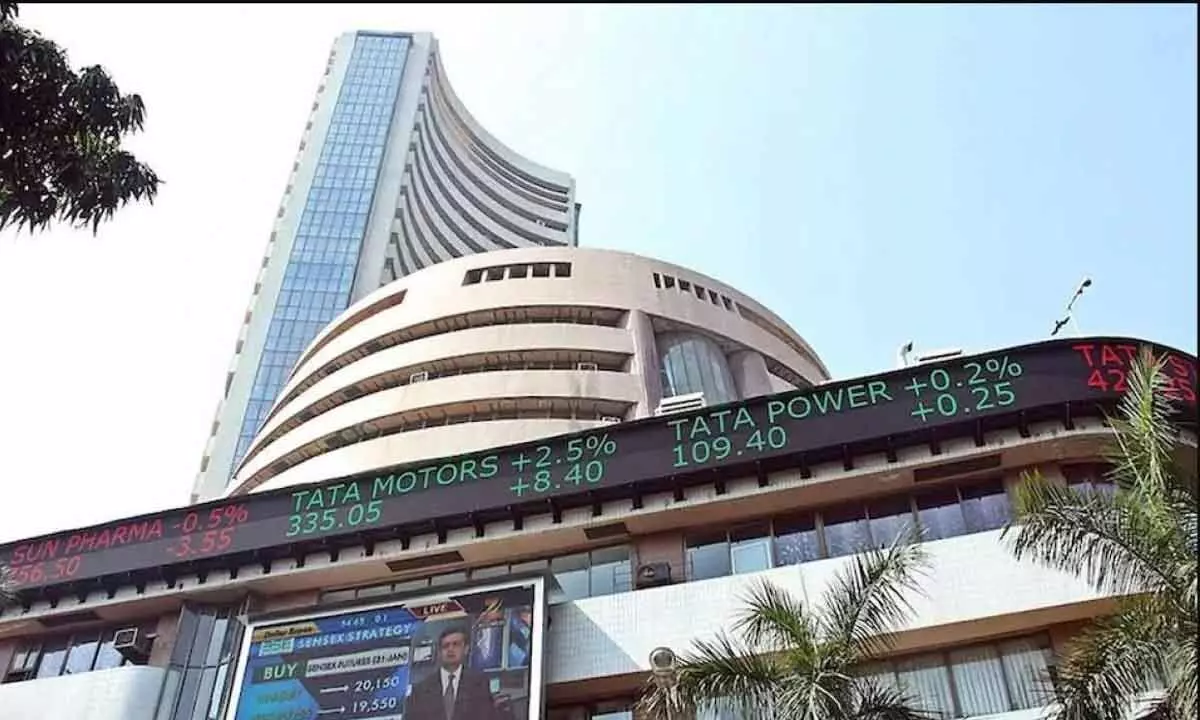Caution alert to investors for week ahead

Near-term direction of the market will be dictated by government announcements on particular sectors, F&O settlement, international crude oil prices, rupee-dollar movements, outcome of Jackson Hole Economic Symposium and global cues
Sustained by FII buying, lower inflation data, fresh rally in Adani Group stocks and positive global cues; the stock market continued to rise for the fifth straight week during the week ended. BSE Sensex kissed the psychological 60,000 mark last week, but ended a shade below it, rising 183 points to close at 59,646 points, and NSE Nifty moved closer to 18,000 points, up 60 points at 17,758 points. In the broader market, the Nifty Midcap and Smallcap indices gained 0.6 percent and 0.4 percent.
FIIs continued their buying with purchases of Rs3,129 crore of equities, while DIIs sold equities worth of Rs1,809 crore. However, it is pertinent to note that in the month of August till date, the FIIs bought equities worth Rs17,970.62 crore, and DIIs sold equities worth Rs6,052.67 crore. Indian rupee slipped 13 paise to end at 79.78 per dollar.The ongoing rally is sustainable and earnings will further improve from Q3FY23. Sectorally, FMCG, Infrastructure, Energy, and Realty indices were in green, whereas Pharma, Oil & Gas, and Banks closed in the red. The total market capitalization (mcap) of BSE-listed companies jumped to an all-time high of Rs280.52 lakh crore on August 18. Markets may witness consolidation after five weeks of successive gains withhardly any major decline in the indices. Investors who have made disproportionate profits or portfolios should book some profits and have 15-20 per cent in cash suggest savvy old timers. Observers feel that renewed geopolitical conflicts across some parts of globe make India a very attractive and an alternate investment and outsourcing destination.The growingtension between the US and China over Taiwan may escalate into geopolitical instability adversely impacting sourcing of inputs and equipment from the world's second largest economy.These developments will have some positive spill overs for India.
Near term direction of the market will be dictated by government announcements on particular sectors, F&O settlement, international crude oil prices, rupee-dollar movements, outcome of Jackson Hole Economic Symposium and global cues. A highly cautious approach is advised for the coming week.
Listening Post: Many feel that stocks are divorced from the economy, but remember that it won't be like that forever. What happens in the economy eventually matters. Slower growth, more inflation and higher interest rates isn't a recipe for long-term success. Here's a thought experiment. Imagine the economy is looking a bit end of cycle, unemployment close to as low as it has ever been, forecast growth low, interest rates being cut and stocks high. Then fast forward three years to an economy that's not much bigger than it was and has unemployment slightly lower, growth forecast to be much lower and interest rates being raised. Where should stocks and other risky assets be? The right answer, at least for where stocks in fact are, is up by a third. That end-of-cycle economy was 2019, and today's economy looks worse for investors on almost every measure—except the fat profits being made by companies. Luckily for stock-market investors, the economy doesn't seem to matter that much—though that may not last forever. Predicted profits 12 months ahead are up a third, and so are stock prices. Who cares if wages are rising fast and the economy stagnating, so long as the costs can be passed on to customers? It isn't exactly that the economy is irrelevant. Recession was (for a short while) terrible for stocks in 2020, and this year the hawkish US Federal Reserve combined with renewed concern about growth to knock 20 per cent off the stock indices, mainly by reducing valuations. But so long as earnings are strong and expected to stay that way, there's a strong underpinning for equities. Here's where we get the risk to stock prices. Earnings come from the gap between revenues and costs, and this year many obvious costs have been rising faster than sales. Labour costs are up, productivity is down. Input costs are up, and domestic after-tax profit margins have dropped back to where they were in 2019, after hitting a record high last year. The result is that for the corporate sector as a whole, as measured by economic data, earnings gains have been purely due to revenue gains, the vast bulk of which is merely inflation. Again, investors don't seem bothered, because the stock market isn't the economy. Nifty50 profit margins have bucked the broader economic trend and remain higher than in 2019, having done well after the initial shock of the pandemic. Forecast margins are coming down but remain elevated, especially for large companies. On top of that, big companies increased their sales far more than the growth in the economy and inflation. Higher margins on bigger sales are exactly what investors want. The key question is how long the stock market can remain divorced from the economy. There are reasons for divergence, such as IPOs, stock issuance, valuation changes and international earnings. But historically there's a strong link between overall profits and economic growth, which vanished in the past three years. Part of the gap between the economy and the market is that the market is heavily skewed toward large conglomerates and technology companies. Many were pandemic winners as demand shifted online, helping maintain rapid growth despite their size and boosting profit margins. Perhaps now both those factors will reverse, just as rivalry increases and competition regulators get more aggressive.The past three years have demonstrated once again that the stock market isn't the economy. But what happens in the economy eventually matters. Slower growth, more inflation and higher interest rates isn't a recipe for long-term success. Investors had better hope it reverses.
Quote of the week:"The best way to measure your investing success is not by whether you're beating the market but by whether you've put in place a financial plan and a behavioural discipline that are likely to get you where you want to go."……….Benjamin Graham
F&O / SECTOR WATCH
Ahead of the settlement week, the markets corrected on Friday after eight day winning streak inducing caution among market participants. Nifty ended the week above 17,700 mark, while Bank Nifty closed below 39,000 mark. Nifty Futures Open Interest increased sharply over last week and current Open Interest was the highest seen over in a month. On the back of closure of current month positions and rollover of the positions to next month; heightened volatility can't be ruled out in the coming week. The stock-specific action is likely to remain on radar. On the option front, maximum Call Open Interest is at 18,000 strike, followed by 17,900 strike. The maximum Put Open Interest was seen at 17,000 strike, followed by 17,500 strike. Implied Volatility (IV) of Calls closed at 15.33 per cent, while that for Put options closed at 16.49 per cent. The Nifty VIX for the week closed at 17.35 per cent. PCR of OI for the week closed at 1.21. Stock futures looking good areApollo Tyres, Ambuja Cements, Delta Corp, IRCTC, TCS, Tata Communications and Zee Telefilms.Stock futures looking weak areBirla Soft, DLF, Metropolis, REC, ONGC and Shriram Transport.














